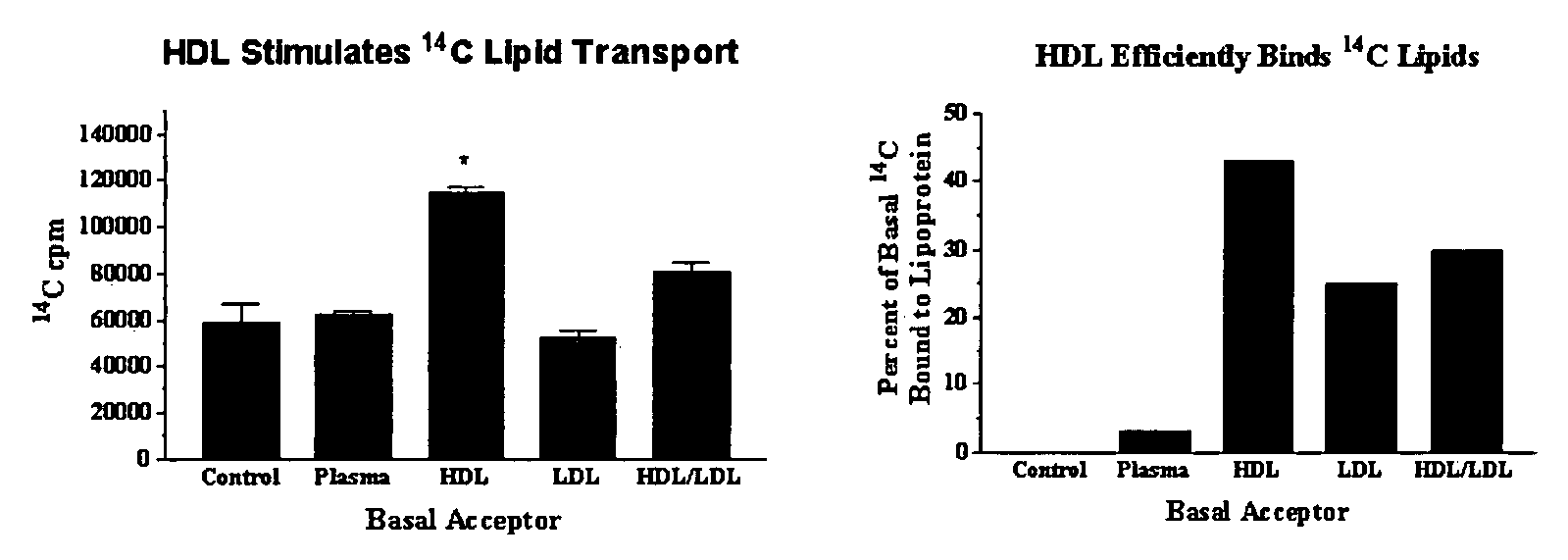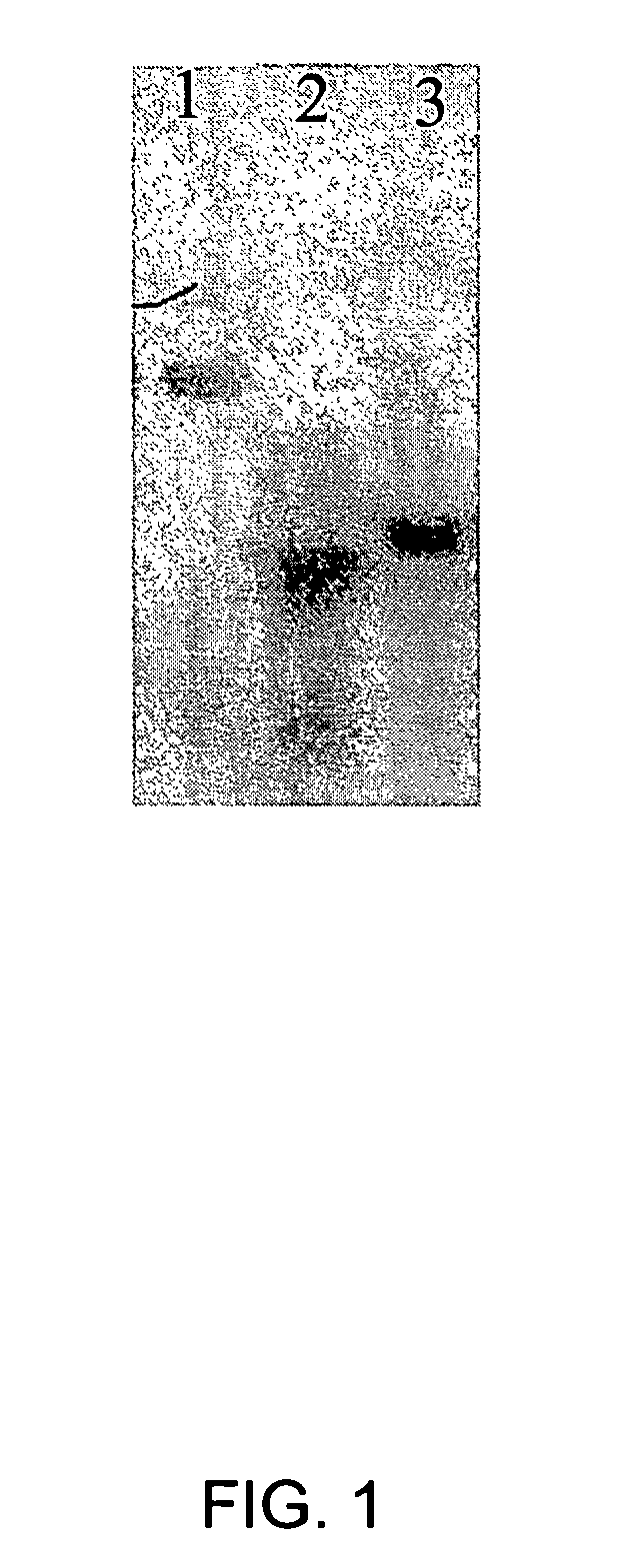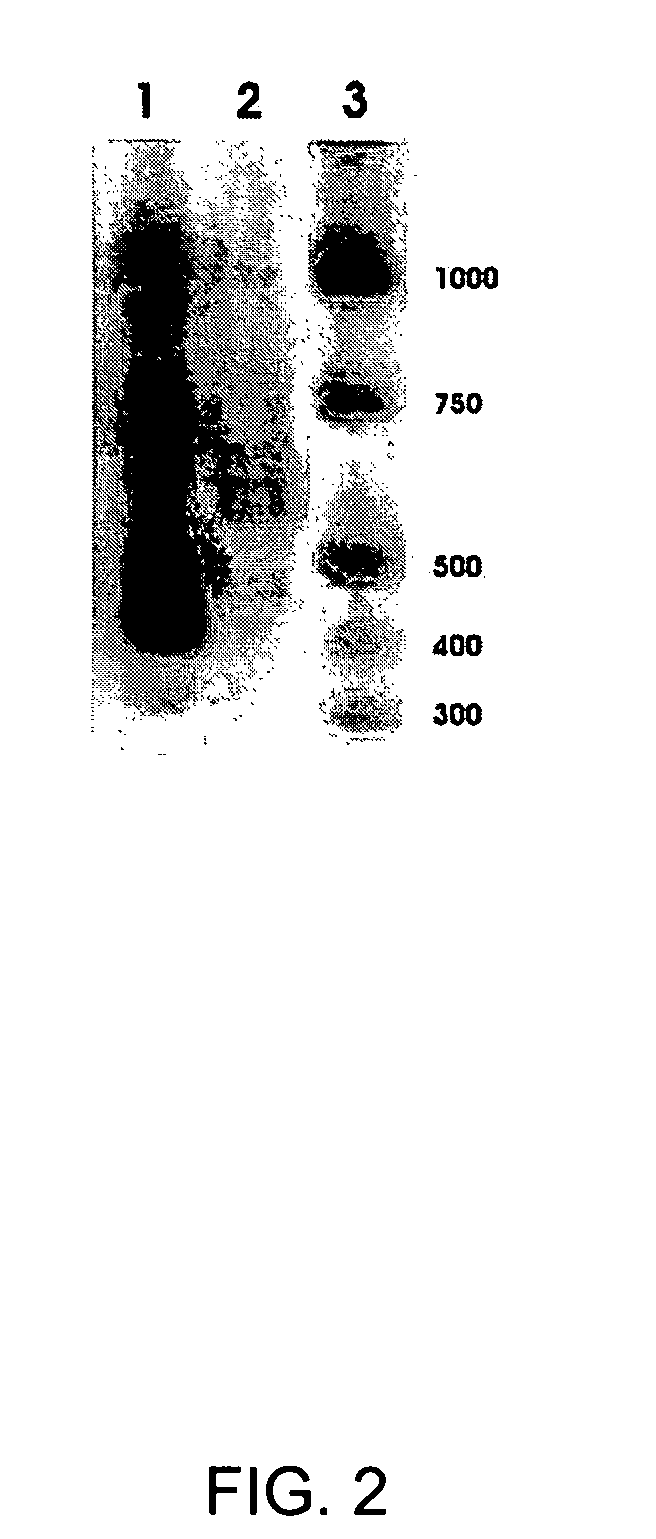Methods to increase reverse cholesterol transport in the retinal pigment epithelium (RPE) and Bruch's membrane (BM)
a technology of retinal pigment epithelium and reverse cholesterol transport, which is applied in the field of ophthalmology and cell biology, can solve the problems of lack of dry amd treatment and impairment of ability, and achieve the effects of increasing reverse cholesterol transport, facilitating, and facilitating
- Summary
- Abstract
- Description
- Claims
- Application Information
AI Technical Summary
Benefits of technology
Problems solved by technology
Method used
Image
Examples
example 1
Materials and Methods
Cell Culture and Drug Treatments
[0119]Primary cultures of normal human RPE cells from passages 5 to 10 were used for the experiments described. RPE cells were grown to confluence on laminin-coated 6 well Transwell tissue culture plates (Costar) with DMEM-H21 containing 10% fetal bovine serum, 2 mM glutamine, 50 μg / ml gentamicin and 2.5 mg / ml fungizone in the top and bottom chambers. For immunofluorescent staining cells were grown on laminin coated slides in the same medium. Cells were grown for at least 1 week at confluence prior to drug treatment. Cells to be treated with drugs were incubated in serum free DMEM-H21 prior to drug addition. Drug treatments were in serum free DMEM-H21 with or without 10−7 M thyroid hormone (T3), 2.5×10−6 M 22 (R) hydroxycholesterol, or 10−7 M cis retinoic acid in both chambers for 36 hours.
RT-PCR
[0120]Confluent cell cultures were harvested and total RNA was purified using RNAzol (Teltest, Inc., Friendswood, Tex.) according to the ...
example 2
Expression of Transporters in RPE Cells
[0127]One skilled in the art recognizes that certain RCT components in cultured human RPE cells have been demonstrated (Mullins et al., 2000; Anderson et al., 2001). Nuclear hormone receptors known to regulate expression of reverse cholesterol transport proteins are also expressed in cultured human RPE.
[0128]A skilled artisan recognizes that there is expression of TRs and RXRs in RPE cells in culture (Duncan et al., 1999). RT-PCR of human RPE cell cDNA revealed that these cells also express mRNAs for apo E, ABCA1, SR-BI, SR-BII and 1xr α. As shown in FIG. 1 lane 1, FIG. 1 lane 2 and FIG. 1 lane 3, RPE cells express mRNAs for apo E, ABCA1 and 1xr α, respectively.
[0129]As shown in FIG. 2, lane 1, and FIG. 2, lane 2, RPE cells express mRNA for SR-BI and SR-BII respectively.
[0130]Furthermore, in immunofluoresence microscopy experiments, RPE cells stain strongly for SR-BI (FIG. 3A) and SR-BII (FIG. 3B). Control non-specific IgG or antibody vehicle d...
example 3
Regulation of APO E Secretion in RPE Cells
[0132]In order to distinguish apical (A) from basally (B) secreted apo E, RPE cells were cultured on laminin-coated Transwell plates. Specifically, human cultured RPE (passage 2-10, 35 y.o. donor) were placed on laminin-coated Transwell plates, wherein the upper and lower wells both had serum-free media. Total protein and apo E-specific protein concentrations were measured from media pooled and concentrated from 3-6 replicate wells. To assess apo E-specific secretion, apo E was purified from conditioned media by heparin-sepharose affinity chromatography and visualized by western blotting. Apo E concentrations were consistently greater in the basolateral media (FIG. 5, lane 1 vs. lane 2). These data demonstrate that RPE cells display polarized secretion of cellular proteins, including apo E. Thus, this indicated that Apo E is preferentially secreted basally, supporting its role in RCT.
[0133]Since RPE cells express 1xr α as well as thyroid hor...
PUM
| Property | Measurement | Unit |
|---|---|---|
| body weight | aaaaa | aaaaa |
| body weight | aaaaa | aaaaa |
| body weight | aaaaa | aaaaa |
Abstract
Description
Claims
Application Information
 Login to View More
Login to View More - R&D
- Intellectual Property
- Life Sciences
- Materials
- Tech Scout
- Unparalleled Data Quality
- Higher Quality Content
- 60% Fewer Hallucinations
Browse by: Latest US Patents, China's latest patents, Technical Efficacy Thesaurus, Application Domain, Technology Topic, Popular Technical Reports.
© 2025 PatSnap. All rights reserved.Legal|Privacy policy|Modern Slavery Act Transparency Statement|Sitemap|About US| Contact US: help@patsnap.com



